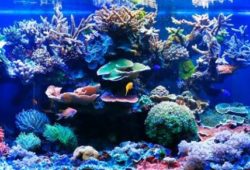Getting Started with a Freshwater Aquarium
In the article I’ll tell you about Getting Started with a Freshwater Aquarium. If you’re thinking about setting up a fish tank in your home, there are a variety of decisions you wish to make. Initial, how much fish do you want to keep? Totally different sorts of fish require completely different care, totally different conditions, completely different equipment, and different variables.

If you are simply starting out, there are many reasons to begin with a freshwater tank versus a saltwater tank. To start with, freshwater tanks are much cheaper — equipment, supplies, and the fish themselves. Recent water is less complicated to keep up; if you make mistakes, freshwater tanks give you a abundant broader margin of error. And repairing any mistakes are more cost effective as well. Also, as a result of of this cheap value, if you opt that keeping fish is not for you, your initial investment will not are too burdensome.
Saltwater aquariums are additional complicated and more expensive to line up and maintain, but saltwater fish are typically more colorful, more interesting, and additional fun to seem at. A saltwater aquarium could be a more complete environment; a saltwater reef tank, for instance, can typically have thousands of organisms to seem at. You’ll have a complete ecosystem in your living space, which can be not solely enticing but also educational. Not only will you have got colourful coral in your saltwater reef tank, but you’ll be able to conjointly add snails, shrimp, and crabs, that can add additional interest to your tank and can also serve to clean the tank.
If you are still not certain, you can perpetually start out with a freshwater system, and then convert to salt water as you learn a lot of about keeping fish.
If you begin with contemporary water and have the area for it, go for a larger tank; massive tanks are a lot of stable in terms of water chemistry and temperature, and are therefore easier to maintain. Conditions will amendment a lot of gradually, and therefore it can be easier to correct any mistakes. A good size to begin with may be a 3-foot-long tank that holds twenty-25 gallons of water.
Your dealer will help you with all the equipment you’ll want, however usually you’ll have to purchase a tank, a filter, a heater, a lid with lighting, some kind of substrate (gravel or sand), and other decor (rocks, pieces of wood, and plants, whether or not live or plastic).
Positioning your tank is additionally important. Create certain that the furniture holding your tank is solid; water weighs 8.thirty five pounds per gallon, therefore a twenty five-gallon tank would weigh additional than 200 pounds, and the load of the tank itself and every one the equipment. Strive to position the tank faraway from direct daylight (which would encourage the growth of algae), and aloof from locations where it might be tough to take care of a stable temperature (like close to a radiator or open window with drafts). A quiet location is healthier than a heavy-traffic area.
After the tank, the filter system is that the second most vital component of a freshwater aquarium. Filters eliminate each physical and chemical waste, and aerate the water; for effective system maintenance, your filtration system ought to filter all the water in the tank a minimum of four times an hour. There are a selection of different filters available; make sure that your filter is powerful enough for the dimensions of your tank.
Canister filters are the foremost powerful filtration systems; they are suitable for medium-sized to massive tanks, and are mounted outside the tank. Canister filters force the water through, rather than permitting water to flow through gradually. Power filters are maybe the foremost commonly used; they suspend off the back of the aquarium, are easy to install and maintain, and offer each mechanical and chemical filtration. Another type of filter may be a UGF, or below-gravel filter, which is positioned within the tank underneath the substrate. Although cheap and straightforward to take care of, UGFs tend to clog, and don’t seem to be a good choice if your tank includes live plants.
Your freshwater aquarium can also require a heater; there are several types of heaters, but be sure you decide on one with a thermostat. Choosing the proper heater could be a matter of determining the average room temperature and also the water temperature you wish to take care of, and then calculating the wattage you’ll need to take care of that water temperature for the scale of tank that you simply have.
For example, if your average area temperature is 68 degrees Fahrenheit and your desired water temperature is 75 degrees, you’ll want to heat the water by seven degrees on an ongoing basis. Per charts that are accessible online (and that should be accessible at your pet store), heating the water in a twenty five-gallon tank by 7 degrees needs seventy five watts of power.
The best place to find your heater is near where water is flowing, like near the inflow or outtake of your filter. This way, the heated water is dispersed throughout the tank a lot of quickly and a lot of evenly.
Finally, you may would like to work out what kind of substrate you would like to install in the bottom of your tank. For a freshwater tank, two or three inches of gravel lining the underside of your tank is sometimes a good choice.
Once you get started together with your freshwater aquarium, there are several different choices you will want to make relating to style parts, lighting, and other issues, however with the higher than mechanics taken care of, you’ll be well on your way.



